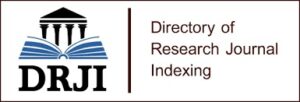Prevalence of Anemia by Age Groups and Localities: Implications for Early Aging
Background: Anemia is a major public health concern, particularly in aging populations. This study investigates the prevalence of anemia across different age groups and localities in the West Region of Cameroon, examining its association with early aging.
Methods: A cross-sectional study was conducted in five localities: Bafang, Bafoussam, Baham, Bandjoun, and Dschang. A total of 768 participants aged ≥50 years were categorized by sex and age groups (50–59, 60–69, 70–79, ≥80 years). Hemoglobin levels classified participants into three categories: anemia, normal hemoglobin, and erythrocytosis. The Chi-square test was used to analyze the association between sex and hemoglobin classification, with statistical significance set at p<0.05.
Results: The Chi-square test showed a significant association between sex and hemoglobin classification (p<0.0001). Anemia prevalence was higher in men (49.2%) than in women (12.4%). The highest prevalence was observed in the 50-69 age groups, with a subsequent decline in older individuals. Locality-based analysis revealed that anemia was most prevalent in Bafoussam and Bandjoun.
Conclusion: This study highlights significant sex- and locality-based disparities in anemia prevalence, with potential implications for early aging. Targeted interventions, including nutritional programs and improved healthcare access, may help mitigate these effects.




















